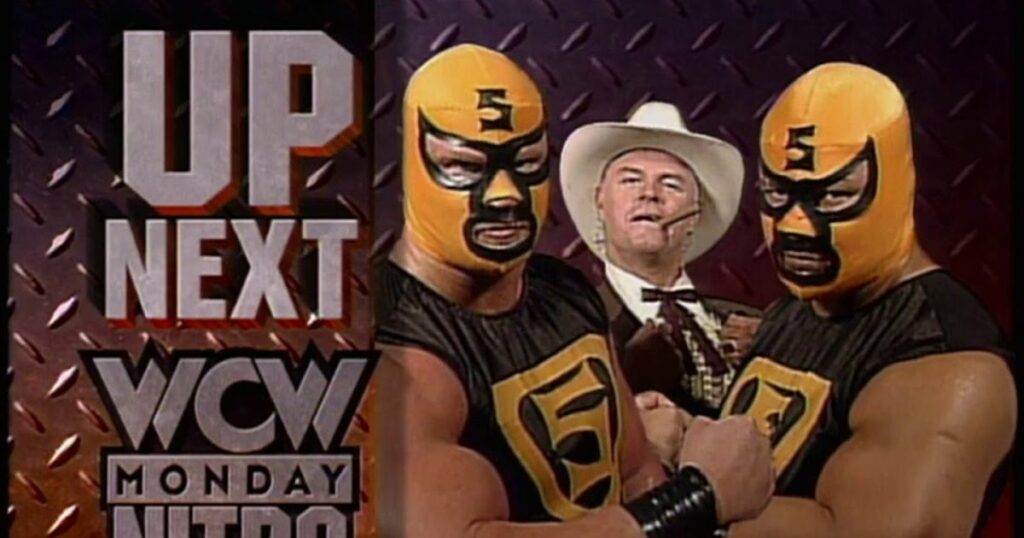
Ten Wrestlers You Didn’t Know Wrestled in WCW
WCW had many wrestlers on their roster at one time or another. Apart from Nitro, Thunder and pay-per-views, some wrestlers may have only appeared on programmes like Pro or Prime, that were not as widely seen. Or, it was a case of “before they were stars,” wrestlers who worked as enhancement talent, before finding more opportunities down the track. It may even be that while they were a name at one point, they worked under a mask or different gimmick that made them unrecognisable. Or they just didn’t work very many matches. Either way, let’s take a look at ten wrestlers in no particular order – and a few honourable mentions – you may not have realised worked for World Championship Wrestling.
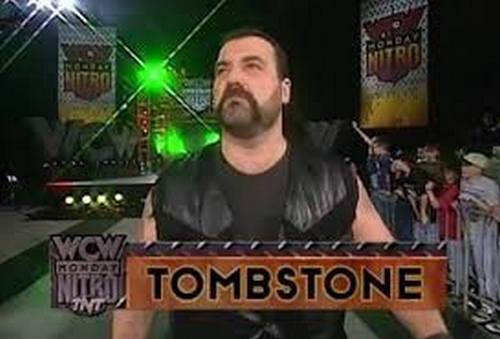
911
The monstrous 911 was an ECW favourite, brought into the company in 1994, after being trained by Larry Sharpe at the Monster Factory and working independents for a few years. He was first introduced as an un-named handler of Sabu, and would routinely appear to destroy everyone with chokeslams when Paul E. Dangerously dialed just three numbers – 911. Presented in this capacity, he became insanely popular to the ECW audience, and even became PWI’s Rookie of the Year for 1994.
In 1996, he was let go from ECW – apparently for mistreating the ring crew – and signed with WCW that same year. He went under a few different names; Sledgehammer, Tombstone, and finally Big Al. He got wins over job guys on Saturday Night, but was put down by established stars Lex Luger and The Giant on Nitro. He was released in 1997.
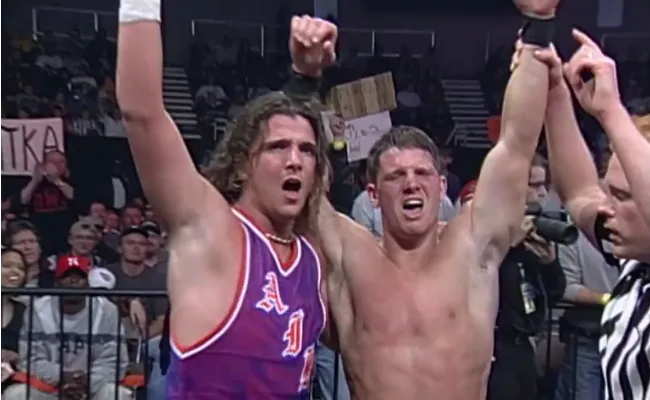
AJ Styles
‘The Phenomenal’ AJ Styles made a name for himself working for companies like Ring of Honour, and other notable independents before starring in TNA’s X-Division, and later, as their World champion. After a lengthy stint in TNA, Styles became a regular for New Japan, where he joined the Bullet Club, and then signed with WWE (where he remains at time of writing).
Back in 2001, Styles was working with Air Paris in NWA Wildside when they were signed by WCW. Under the name Air Styles, he teamed with Paris to form Air Raid. They were a part of the WCW Cruiserweight Tag Team title tournament on the March 5 Nitro, but lost in the first round to eventual winners Kid Romeo and Elix Skipper. WCW folded soon after.
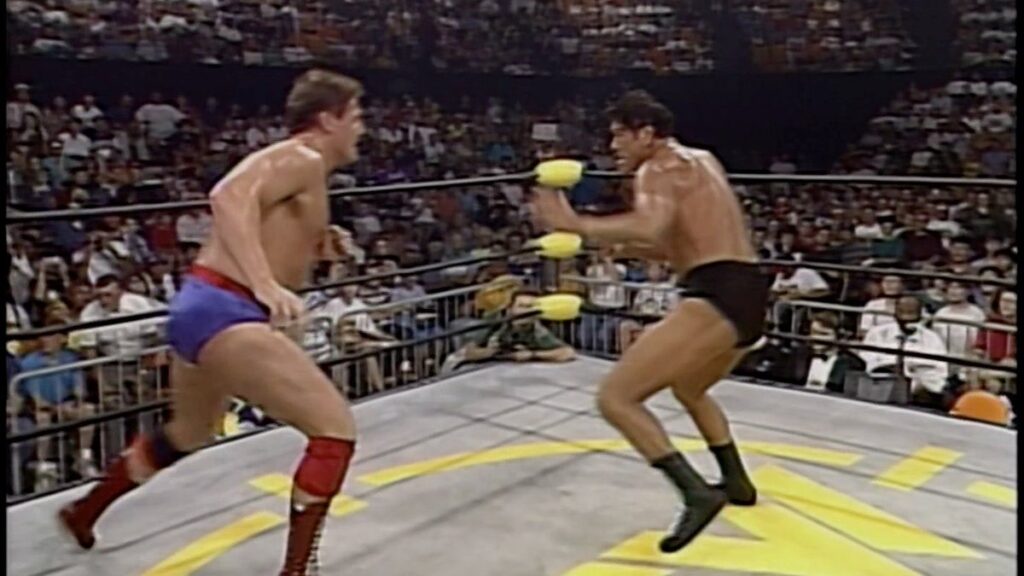
Antonio Inoki
The word “legend” gets thrown around a lot, particularly in regards to professional wrestling. However, there is no argument about where Antonio Inoki stands, and his legacy towers over the accomplishments of a great many other wrestlers. Inoki was not only a cultural icon in Japan, but known around the world, especially after his famous ‘mixed rules’ fight with Muhammad Ali.
For years, WCW and New Japan had a working relationship, and the two companies worked together for a show in North Korea. But treks to the United States for Inoki were very rare. Starting in 1994, he embarked on a retirement tour, and led to him working a match with WCW Television champion, Steven Regal. Taking place on August 24, 1994 at a Clash of the Champions card, Regal was fortunate that it was a non-title bout, as he was choked unconscious.
“That was the finish, and I knew he wanted me to tap … I wasn’t going to tap. I knew it would just be better if I didn’t. I’d been put out before …and I knew it be over really quick, and it was. He put it on and I didn’t tap and I was out before I knew it. I was very fortunate that they picked me … I was the last of the British style [wrestling] that was a big thing in Japan. I was the only one around doing it at the time. I was very happy and honored. At the end of the day, who at my age can say that they fought somebody that fought Muhammad Ali?”
~ XPac 1-2-360 Podcast
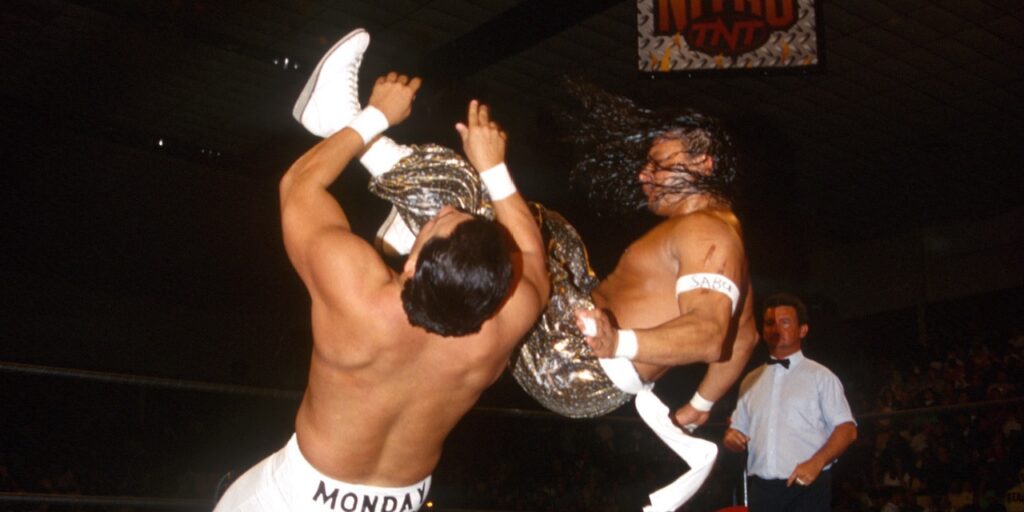
Sabu
A man who personified ECW, and helped put the company on the map, Sabu was fired by Paul Heyman when he failed to appear on an ECW Arena card on April 8, 1995. Then-WCW booker Kevin Sullivan wanted Sabu for the debut Monday Nitro episode on September 4, but got him on the second one. Sabu beat Alex Wright, but then had the result overturned when he proceeded to put Wright through a table. (Fun fact, Sabu used a theme that would later be used by La Parka).
He made one WCW pay-per-view appearance, where he defeated Mr. JL (more on him in a minute) at Halloween Havoc ’95. Sabu’s uncle The Sheik was his second, and without telling officials, threw a fireball at JL as he lay on the mat. Sabu would get another match – a win over Disco Inferno – before leaving to return to Japan and ECW.
In 2001, after Sabu had another disagreement with Heyman and left ECW once more, WCW announced on their website that they had signed him. However, an injunction from Heyman prevented it from happening, stating that Sabu was still technically under contract.
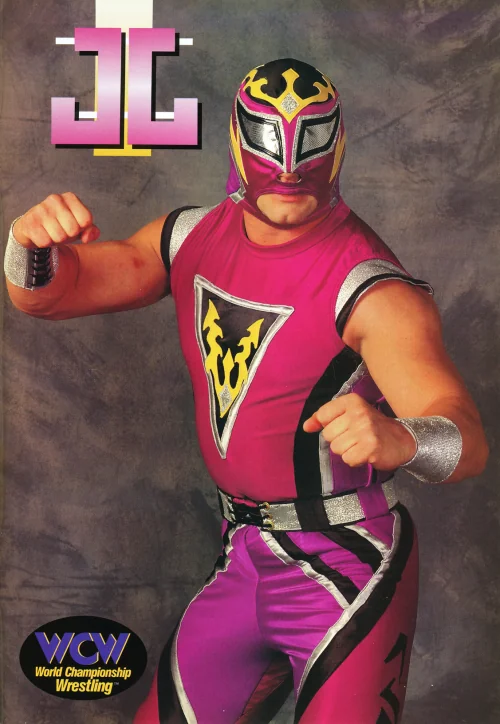
Jerry Lynn
As mentioned a minute ago, Sabu worked against a masked man who would go onto become an ECW World champion. Jerry Lynn worked for WCW from 1995-1997, as part of the Cruiserweight division. But with so many names involved, JL had a hard time standing out, despite his colorful attire, which had gotten him the job in the first place. Regardless, Lynn would recall before going out for his first match that he still had no name. Sullivan the booker is alleged to have said “f*ck it, let’s just call him Mr. JL.”
His final match for the company was at Clash of the Champions 34 in a six man, where he teamed with Konnan and La Parka against Chris Jericho, Chavo Guerrero Jr and Super Calo in a losing effort. Lynn was let go in July 1997 while out injured. Lynn worked a couple of matches for the WWF before finding better opportunities in ECW.
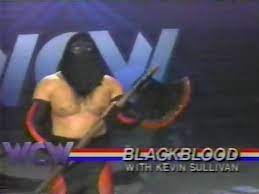
Billy Jack Haynes
Sticking with the theme of wrestlers under masks, leads us to the next entry. In the middle of 1991, a wrestler named Black Blood wrestled a few matches for WCW. He came to the ring with a large axe and did an executioner gimmick. The finisher was coming off the top rope with a chop to the throat of a fallen opponent. After a very short time, the man under the hood was released.
This would be Billy Jack Haynes’ last run in a major wrestling promotion. It was a fall from grace for a man who was one of the WWF’s most popular stars in the mid-to-late 80’s.
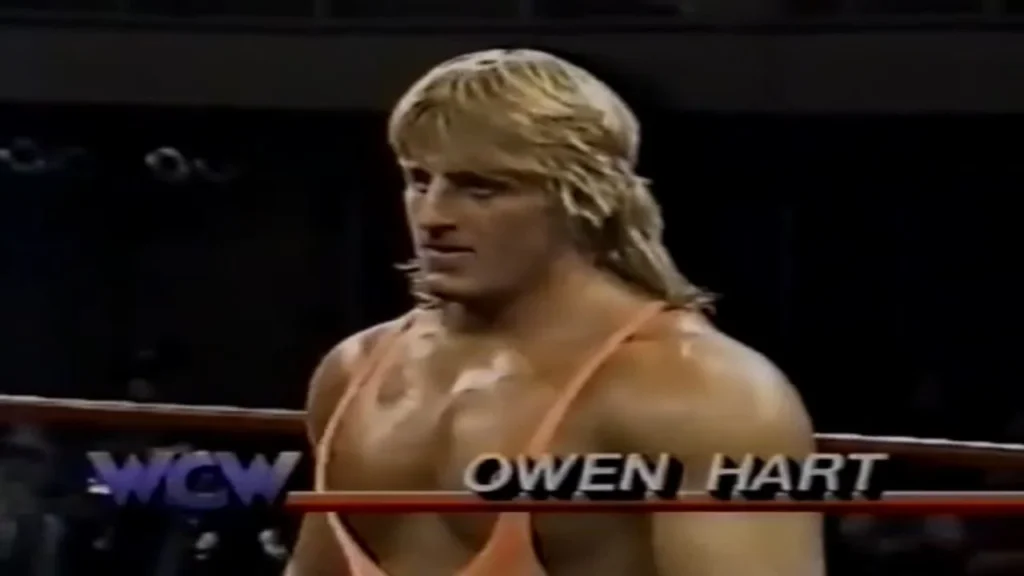
Owen Hart
Under the guise of The Blue Blazer, Owen Hart lost to Mr. Perfect in a short match at Wrestlemania 5 and decided to leave the WWF. He spread his wings, both under his real name and the Blazer, finding himself back in Stampede before it closed down, as well as Japan, Mexico, England and Germany. In 1991, he also wrestled five matches for WCW, which all aired on television.
His first WCW match was on March 16 against an enhancement wrestler. He also teamed on one occasion with Ricky Morton, and then with Brian Pillman against The Freebirds. Apparently there was a plan to make Owen and Pillman a team, but a deal could not be struck, and Owen went back to the WWF.
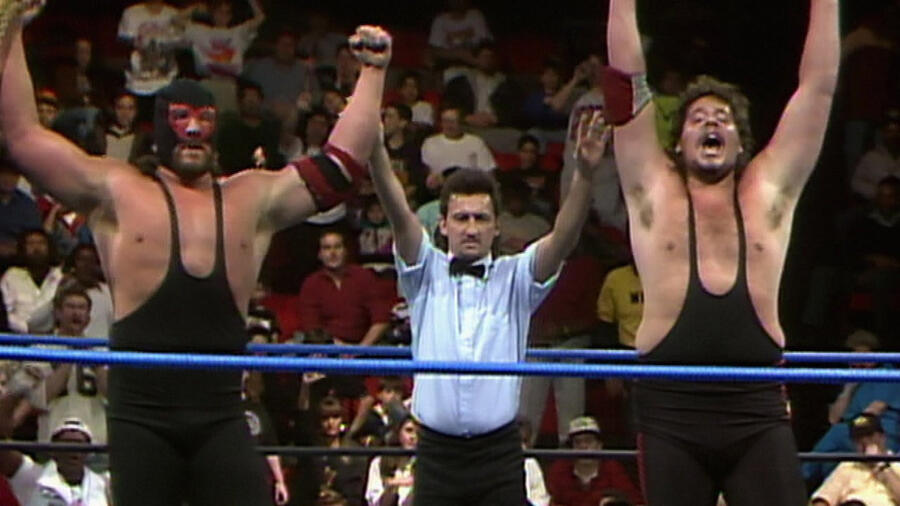
The Godwinns
Prior to becoming hog farmers Henry O. and Phineas I. in the WWF, Mark Canterbury and Dennis Knight were Shanghai Pierce and Tex Slazenger, respectively. After starting out in the USWA, they came to WCW in November 1992. They worked the majority of the time on WCW’s B-shows, putting over other teams while always beating ham ‘n’ eggers.
Canterbury was signed by the WWF in late-1994 as Henry O. Godwinn, before being joined in early 1996 by his ‘cousin’ – later recast as his brother – Phineas I. Godwinn. They became a solid middle of the range tag team and feuded with The Bodydonnas and the Legion of Doom. Canterbury retired due to a spinal injury in 1998, while Knight would remain with the WWF for several more years.

The Warlord
The massive Warlord was one of a number of wrestlers let go by the WWF around the time of the steroid scandal. He toured Japan and Germany and worked a number of independents, as well as stopping into Abrams’ UWF, where he and The Barbarian reunited the Powers of Pain. On October 11, 1995, The Warlord and Barbarian landed in WCW as the masked Super Assassins, managed by Col. Robert Parker, and lost to the Nasty Boys. The team was disbanded after losing to Sting and Lex Luger on the January 1, 1996 edition of Nitro.
Warlord retired that year due to injuries suffered in a car accident, which caused nerve damage. He attempted a comeback on the independents, but was injured again in a motorcycle accident in 2001. He has made other appearances in smaller promotions, including Chikara back in 2012, reuniting with Barbarian and Meng for the King of Trios tournament.
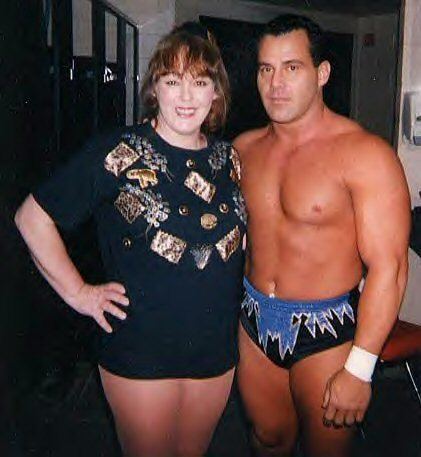
Leilani Kai
Stopping into WCW for a cup up coffee was veteran women’s wrestler, Leilani Kai. The former WWF Women’s champion and co-holder of the WWF Women’s Tag Team titles, she appeared on the October 20, 1996 edition of WCW Worldwide, losing to Madusa. Several months later she was back, losing this time to Malia Hosaka on Saturday Night. Near the end of the company’s run, she returned under the name Patty Stonegrinder for a brief time before departing. She loudly criticised the booking of Vince Russo, turning down the idea of doing ‘mud wrestling,’ as was the norm for women’s wrestling in that era.
Honorable Mentions
Here’s a couple of names that you probably know were with WCW before becoming huge stars in the WWF, but we would be remiss without at least mentioning them beyond the more obscure examples that you may NOT have known about.
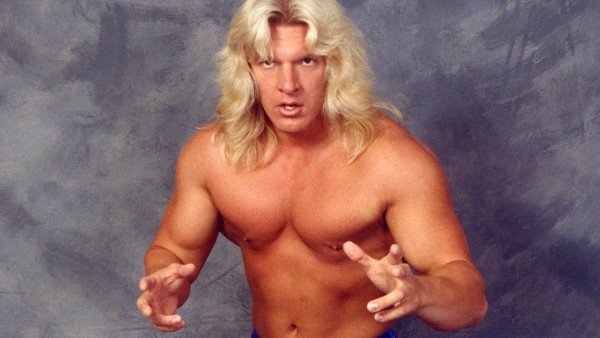
Triple H
Triple H – now one of the most powerful people in wrestling – worked as a lower card wrestler in WCW. After training with Killer Kowalski and working small independent shows, Paul Levesque made his way to Atlanta in early 1994, and was named Terra Ryzing. Later, he adopted a French accent and was called Jean-Paul Levesque. Already using The Pedigree as a finisher, he was teamed with Steven Regal, but shortly after left for the WWF in January 1995.
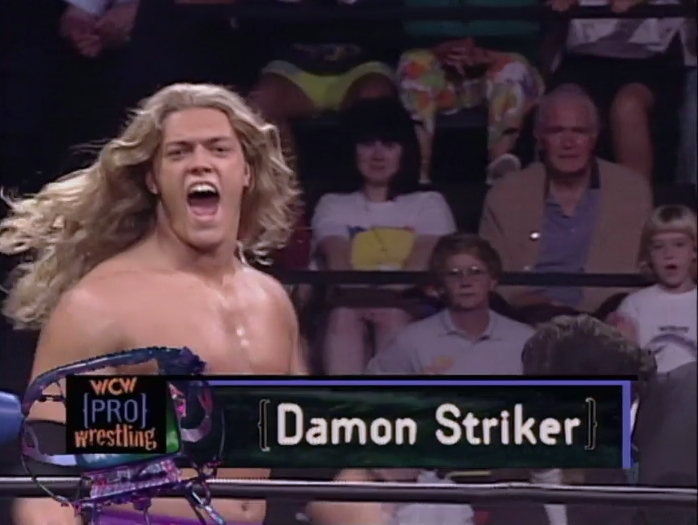
Edge
Now a WWE Hall of Famer, Edge lost to Meng on WCW Pro in February 1996 as Damien Striker (or Damon as it was spelt by the production team). While working an independent show in Ontario, he impressed Carl DeMarco (Bret Hart’s business manager), who encouraged him to send an audition tape to the WWF. He did, but never got a call back, until DeMarco became President of WWF Canada. And the rest is history…
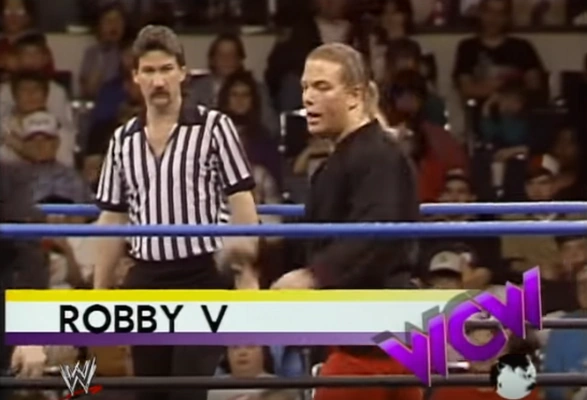
Rob Van Dam
Before becoming Mr. Monday Night in ECW, and going on to have a stellar run in WWE, Rob Van Dam appeared in WCW in the first half of 1993. Under the name Robbie V, he debuted on the January 23 edition of Saturday Night. He had a few more matches before he departed in May.
“I wasn’t happy in WCW. But what really sucked was when I came back from Japan, Bill Watts is no longer the booker. Now the man in charge is Ole Anderson, and Ole Anderson didn’t like Robbie V as much as Bill Watts. So I went from having wins over guys like that to basically either getting squashed on TV, or I was giving tryouts and dark matches for guys that were coming up from different parts of the world and stuff.”
~ One of a Kind Podcast
